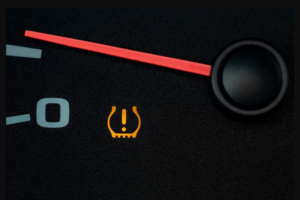Driving on a donut tire is not an ideal situation, yet it is something that most drivers will experience at least once in their lifetime.
A donut tire, also known as a compact spare tire, is a temporary solution to a flat tire. It is smaller and lighter than a regular tire, and it is designed to be used for a short distance and at lower speeds.
The question remains: how long can you drive on a donut tire? The answer is not straightforward, as it depends on several factors, such as the size and quality of the tire, the speed and distance traveled, and the condition of the vehicle’s braking and suspension systems.
In general, it is recommended to drive on a donut tire for no more than 50-70 miles and at a speed of 50 mph or less. Exceeding these limits can cause excess wear on the tire, as well as on the wheel bearings, brakes, and transmission gears.
It is important to note that driving on a donut tire is a temporary solution and should not be considered a long-term fix.
A donut tire has a limited lifespan and should be replaced as soon as possible. Moreover, a donut tire should not be used in off-road or high-speed situations, as it can compromise the vehicle’s stability and handling.
If a driver has to use a donut tire, he or she should consult the owner’s manual for specific instructions and recommendations. Read on!
What is a Donut Tire?

A donut tire, also known as a space-saver tire, is a temporary spare tire that is smaller and lighter than the regular tires of a vehicle. It is designed to be used in case of a flat tire or a puncture and is not intended for long-term use.
Donut tires are typically found in the trunk of a vehicle and are easily identifiable by their size and appearance.
They are usually smaller in diameter and width than the regular tires and have a different tread pattern. Donut tires are made of a different rubber compound and are not as durable as regular tires.
The size of a donut tire is usually determined by the size of the vehicle’s regular tires. Donut tires are designed to be used on a temporary basis until the regular tire can be repaired or replaced.
They are not intended for use on a long-term basis because they have limited tread life and are not as durable as regular tires.
It is important to note that donut tires have limitations when it comes to speed and distance. Most manufacturers recommend driving at speeds of no more than 50 miles per hour on a donut tire.
The recommended distance to drive on a donut tire is usually around 50 miles. However, this can vary depending on the quality of the tire and the vehicle it is being used on.
In summary, a donut tire is a temporary spare tire that is smaller and lighter than the regular tires of a vehicle. It is designed to be used in case of a flat tire or a puncture and is not intended for long-term use.
Donut tires have limitations when it comes to speed and distance and should only be used as a temporary solution until the regular tire can be repaired or replaced.
How Long Can You Drive on a Donut Tire?
When a tire goes flat, drivers often turn to their spare tire, commonly known as a donut tire. Donut tires are designed to be a temporary solution to get drivers back on the road and to a repair shop. However, how long can you drive on a donut tire before it becomes unsafe?
Distance Limit
According to experts, drivers should not drive more than 50 to 70 miles on a donut tire. Driving beyond this distance can increase the risk of tire blowouts and other damage to the vehicle.
AAA suggested that drivers should not drive more than 50 miles and that they should use it to drive to the nearest repair shop.
It is important to note that this distance limit is just a general guideline and can vary depending on the quality of the tire and the driving conditions.
Speed Limit
In addition to distance, drivers should also be aware of the speed limit when driving on a donut tire. The recommended speed limit for driving on a donut tire is 50 mph or less. Driving at higher speeds can cause excessive wear on the tire and other components of the vehicle.
Tire Mileage
Donut tires are not designed for long-term use and have a limited lifespan. On average, donut tires can travel up to 50 to 70 miles before they need to be replaced. However, some experts suggest that donut tires can travel up to 300 miles if necessary, but this is not recommended.
Off-Roading
Driving on a donut tire off-road is not recommended. Donut tires are not designed for rough terrain and can easily become damaged or punctured. If you need to drive off-road, it is best to replace the donut tire with a regular tire.
Motor Biscuit also reported that driving with donut tires results in poor traction and maneuvering.
Highway Speeds
Driving on a donut tire at highway speeds is not recommended. Donut tires are smaller and thinner than regular tires, which can cause excessive wear on the tire and other components of the vehicle.
Additionally, driving at high speeds can increase the risk of tire blowouts and other damage to the vehicle.
In summary, drivers should only use a donut tire as a temporary solution and should not drive more than 50 to 70 miles on it. Additionally, drivers should be aware of the speed limit and avoid off-roading and highway speeds.
It is important to replace the donut tire with a regular tire as soon as possible to ensure the safety of the vehicle and its passengers.
Driving on a Donut Tire: Safety and Handling

When driving on a donut tire, it’s important to be aware of the limitations and potential risks. Donut tires are designed to be temporary fixes and are not meant for extended use. Here are some important safety and handling considerations to keep in mind when driving on a donut tire.
Braking
Donut tires have a smaller surface area and less traction than regular tires, which can affect braking distance and performance. Drivers should avoid sudden or hard braking and maintain a safe following distance to allow for extra stopping time.
Your car will also pull to the side where your donut tire is on as emphasized by Motor Biscuit. This will result in an off-balance, so make sure you don’t drive too fast.
Traction
Donut tires have less traction than regular tires, especially in wet or slippery conditions. Drivers should avoid sharp turns and sudden movements and maintain a slower speed to reduce the risk of losing control.
Stability
Donut tires can affect the stability of a vehicle, especially at higher speeds. Drivers should avoid excessive speeds and sudden movements, and maintain a slower, more controlled driving style.
Steering
Donut tires can affect the steering of a vehicle, making it feel less responsive and more difficult to control. Drivers should be aware of this and make any necessary adjustments to their driving style to compensate.
Lights
Donut tires can affect the alignment of a vehicle, which can cause headlights and other lights to point in the wrong direction. Drivers should check their lights and make any necessary adjustments to ensure they are properly aligned.
Overall, driving on a donut tire should be done with caution and only for short distances. Drivers should avoid excessive speeds and sudden movements, and maintain a slower, more controlled driving style.
By following these safety and handling considerations, drivers can help reduce the risk of accidents and other issues while driving on a donut tire.
Can You Repair a Donut Tire?
Mechanic Base highlighted that when it comes to repairing a donut tire, the short answer is no. Donut tires are not designed to be repaired, and attempting to do so can be dangerous.
Donut tires are meant to be used as temporary solutions until you can get your regular tire repaired or replaced. They are not designed for long-term use, and their limited tread and quality can make them unsafe to drive on for extended periods.
It’s important to note that donut tires are made from different materials than regular tires, and they are not as durable. Attempting to repair a donut tire can weaken its structure and increase the risk of a blowout or other tire failure.
If you find yourself with a flat donut tire, the best course of action is to replace it with a new one. While it may be tempting to try and repair the tire to save money, the risk of a tire failure is not worth it.
In some cases, it may be possible to repair a regular tire rather than using a donut tire as a temporary solution.
If the damage to the tire is minor and located in the tread area, it may be possible to patch or plug the tire. However, if the damage is more severe or located on the sidewall, the tire will need to be replaced.
Overall, it’s important to prioritize safety when it comes to tire repairs and driving on a donut tire. Always replace a damaged donut tire with a new one, and consider repairing regular tires rather than relying on a temporary solution.
What to Do with a Donut Tire?

If you find yourself with a flat tire and no spare, or a flat tire that can’t be repaired, a donut tire can be a lifesaver.
According to Reader’s Digest, donut tires are being used today because they are smaller and lighter than regular tires, which makes them easier to store in the car’s trunk. Additionally, donut tires are cheaper than regular tires, which makes them a cost-effective solution for temporary use.
However, it’s important to remember that donut tires are not meant to be driven on for long periods of time. Here are some options for what to do with a donut tire:
Trunk Space
Donut tires are designed to be compact and take up less space in the trunk than a full-size spare tire. This can be a great advantage for those with limited trunk space.
However, it’s important to remember that a donut tire is not a permanent solution and should be replaced with a full-size spare tire as soon as possible.
Tire Shop
If you have a donut tire, you can take it to a tire shop to have it replaced with a full-size spare tire. This is the safest and most reliable option, as tire shops have the equipment and expertise to properly install a new tire. Additionally, they can dispose of the old donut tire for you.
Repair Shop
If you have a flat tire that can be repaired, you can take it to a repair shop to have it fixed. However, if the tire cannot be repaired, you may need to purchase a new tire. In this case, a donut tire can be used as a temporary solution until you can get a new tire.
Temporary Solution
A donut tire is designed to be a temporary solution until you can get a new tire. It’s important to remember that donut tires are not meant to be driven on for long periods of time.
The recommended speed limit for driving on a donut tire is 15 to 20 mph, and you should not drive more than 50 to 70 miles on a donut tire. Driving on a donut tire for too long can cause damage to your car and the tire itself.
In summary, a donut tire can be a useful temporary solution in case of a flat tire, but it’s important to remember that it should be replaced with a full-size spare tire as soon as possible. If you need to use a donut tire, be sure to drive carefully and avoid driving on it for too long.
Frequently Asked Questions

Can You Drive with a Donut?
Yes, you can drive with a donut tire, but it is only intended as a temporary solution to get you to a repair shop. Donut tires are smaller than regular tires and have a limited lifespan. Driving on a donut tire for an extended period can cause damage to your vehicle and compromise your safety.
How Fast Can You Drive on a Donut?
The recommended speed limit for driving on a donut is 50 mph or less. It is essential to drive at a safe and reasonable speed to avoid compromising your safety and the safety of others on the road. Donut tires are not designed for high-speed driving and can wear out quickly if driven too fast or too far.
Can You Drive on a Flat Tire?
Driving on a flat tire is highly dangerous and can cause severe damage to your vehicle’s rims and suspension.
It is crucial to pull over safely and change your tire or call for roadside assistance. Driving on a flat tire can also cause your vehicle to swerve or lose control, putting you and others on the road at risk.
What is the Difference Between a Donut and a Full-Size Spare Tire?
A donut tire, also known as a temporary spare tire, is smaller and lighter than a full-size spare tire. Donut tires are intended for temporary use only and are designed to take up less space in your vehicle’s trunk.
Full-size spare tires are designed to be used as a regular tire and can handle higher speeds and longer distances.
How Long Do Donut Tires Last?
Donut tires are not designed for long-term use and should be replaced as soon as possible. The recommended lifespan for a donut tire is 50-70 miles, but this can vary depending on the tire’s condition and the driving conditions.
It is essential to replace your donut tire with a regular tire as soon as possible to ensure your safety and the safety of others on the road.
Do Donut Tires Affect Your Braking System?
Donut tires can affect your vehicle’s braking system, and it is essential to drive at a safe speed and distance.
Donut tires have thinner sidewalls and less traction than regular tires, which can cause your vehicle to skid or slide when braking. It is crucial to be aware of the handling characteristics of a donut tire and adjust your driving accordingly.
What Should You Do After Driving on a Donut Tire?
After driving on a donut tire, it is essential to have your regular tire replaced as soon as possible. Donut tires are not designed for long-term use, and driving on them can cause damage to your vehicle’s suspension and braking system.
It is also crucial to have your vehicle inspected by a professional to ensure that no damage has occurred to your vehicle’s rims or suspension.
I take great pride in delivering well-researched articles that are supported by reliable sources. My ultimate goal is to provide you with valuable insights and information that will help you drive safely on the road.
Whether you’re a new driver or an experienced one, my aim is to equip you with the knowledge you need to make informed decisions behind the wheel. So, please feel free to explore my articles and let me know if there’s anything specific you’d like me to cover!
To Sum Up
In conclusion, driving on a donut tire is not recommended for extended periods of time. While it is possible to drive on a donut for up to 50 to 70 miles, it is important to keep in mind that these tires are not intended for long-term use.
Driving on a donut tire can cause excess wear on wheel bearings, brakes, and transmission gears due to its smaller size. It is also important to note that the recommended speed limit for driving on a donut is 15 to 20 mph, with a maximum speed of 50 mph in case of an emergency.
If you find yourself in a situation where you need to use a donut tire, it is best to get your regular tire replaced as soon as possible. In the meantime, it is important to take extra precautions while driving, such as reducing your speed and avoiding sharp turns.
In addition, it is important to ensure that your donut tire is properly inflated and has enough tread before driving on it. A donut tire with low air pressure or worn-out tread can be dangerous and cause further damage to your vehicle.
Overall, while driving on a donut tire is a temporary solution, it is important to prioritize safety and get your regular tire replaced as soon as possible to avoid any potential damage to your vehicle or risk to your safety.









